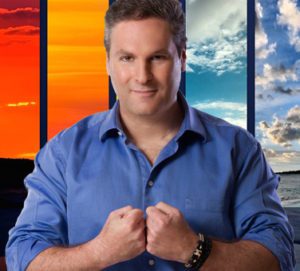As a follow-up to our industry roundup, we like to have sales and marketing experts discuss the opportunities and challenges they face with their clients around sales and marketing presentations. At CustomShow, we believe presentation software is critical to creating effective presentations. But the fundamentals and know-how of the actual meat and potatoes can go a long way. We have a great lineup who responded to 3 questions we posed to them.
Susan A. Enns
What are your must haves in every sales and marketing presentation you create?
In a nutshell, every sales presentation should have two key areas of focus; the first being the prospect’s problems and the second being your solutions. When done correctly, it becomes very clear to the prospect how your products relate directly to what he wants to achieve, and buying from you becomes the only logical choice. More importantly, it creates the time frame when it all is going to take place. I go into much more detail on this in my book, “Action Plan For Sales Success”, including a proposal template that allows you to communicate your solution like this very effectively.
What are the lessons you’ve learned from creating presentations to making them more effective?
The first lesson is, regardless of how expensive or complicated your product is, too much information can actually slow or halt the sale, not move it forward. Your prospect only needs just enough of the right information to make a logical buying decision. Did you need or want detailed blueprints of framing, plumbing, and electrical wiring before you bought your house? Neither does your prospect! The bottom line is, that you do yourself more harm than good if you talk about every feature and benefit your product has, as opposed to talking about only the features and benefits that are important to your prospect.
That leads me to the second lesson. In order to know what is important to your prospect, you have to ask. The fact finds a stage of the sales process is critical to the success of your presentation. This is where your prospect tells you why he or she is going to buy and when. Skip this step, and your presentation will simply not be effective as it could be no matter what you say. The close starts here!
Which marketing and sales presentation blogs do you follow the most?
There are so many excellent sales and sales management blogs out there, that it’s hard to pick! I share RSS and Twitter feeds from my favorites in our Sales Resource Centre on our website at http://www.b2bsalesconnections.com/resource_centre.php, however a few that come to mind are Jeffrey Gitomer, Sales and Sales Management Blog, and Sales Training Advice. I also like to network with other sales professionals in various LinkedIn groups like Sales Gravy.
Jennifer Gluckow
What are your must haves in every sales and marketing presentation you create?
You MUST be genuine with the audience from the beginning or lose them. Every presentation MUST tell a story that your audience can relate to, and connect them to a product or service they want to own. Customize the message for your audience using humor and creativity that delivers a clear, concise, and actionable message. You MUST make the audience feel like they are a part of your show (yes, your presentation is a show). You MUST emotionally engage with the audience to keep them on the edge of their chairs wanting more. My goal is always to provide great content that inspires my audience to take action.
What are the lessons you’ve learned from creating presentations in making them more effective?
- Be prepared in terms of the prospect. Find out what the customer or audience wants, needs and cares about, especially if they are considering a purchase. Tailor your presentation to what they tell you. Appeal to their emotional desires.
- Don’t tell the prospect anything they couldn’t find out on Google in 2-seconds
- Less is more – No one wants to read an entire slideshow. Wordy slides are distracting and dilute your message. Choose images or carefully edited words to make your point.
Which marketing and sales presentation blogs do you follow the most?
My own: www.salesgenerators.com, gitomer.com, www.sellingpower.com
Marc Gordon
What are your must haves in every sales and marketing presentation you create?
Every presentation I create starts with a killer opening and closing. I have three reasons for this. First, people generally remember the first and last things they see and hear. A presentation with great content will never be effective or remembered if the opening or closing is weak. Second, you have less than a minute at the beginning of the presentation to not only get their attention but also to get them to like you. I make it a priority to show my appreciation and respect to the audience right away. I also try to include a story to demonstrate that I clearly understand their needs, values and experiences. Even if I’m not that familiar with their industry, they appreciate the effort. I was once at a conference for a company that made hair care products. The opening speaker was totally bald. He opened by saying that while he only wished he could experience their products, his wife and daughters use the products every day. They fell in love with the guy immediately. Third, I always like to give away a content-rich PDF file that’s relevant to the audience. A guide to Facebook, sales tips, whatever. I then ask audience members to provide me with business cards so I can send them the file. When I send the file I also include additional marketing materials seeking new business. This has been a very successful marketing tool for me.
What are the lessons you’ve learned from creating presentations to making them more effective?
Lesson 1. When it comes to clothing, style is more important than dress code. My presentation style has been called a cross between WWE and a comedy club. However, my problem early on was that I dressed in a suit and tie because I thought that was expected. The performance didn’t match the look and the audience would get confused – a wild show from such a conservative guy? So I started dressing more business casual. Then audience feedback told me I was too casual, which they sometimes found disrespectful. I now dress with a unique style that screams “performer”. Converse shoes, shiny metallic pants, a black shirt covered in silver studs, and diamond rings. Feedback tells me audiences are now cool with the outfit as they view it as a costume instead of an outfit – which they view as simply part of the show.
Lesson 2. I never mention the names of individual companies that may be represented in the audience in case study examples. Experience has shown me that if I mention a company in a positive example, other audience members may get jealous or feel they were better qualified. Of course, using a company name in a bad example is a quick way to get the entire audience to hate you. Even if you don’t mention any other companies, they will not trust you to not embarrass them.
Which marketing and sales presentation blogs do you follow the most?
I have yet to find any speaking or presentation blogs that offer the kinds of advice I’m looking for. Instead, I have chosen to follow other speakers whose style I like and whose knowledge I respect. I am also a member of the Canadian Association of Professional Speakers (The American organization is the NSA, National Speakers Association). It is a great place to share ideas and advice with other speakers in a casual setting.
Jay Hidalgo 
What are your must-haves in every sales and marketing presentation you create?
- Agenda – Let the audience know what to expect
- Opening Questions – Start by asking the audience open-ended qualifying questions. This shows them you care, and gives you a focus on what to accomplish in the presentation
- Helpful info – Make sure the content is relevant and timely for the audience. Use a content brief generator to help better understand what type of content will resonate most with your audience. Conversely, not many care about your plethora of data points
- A chance to ask – not just Q&A at the end, but the chance to ask questions throughout. Stopping at section breaks and saying something like, “I’m going to pause here. Does this all make sense thus far? Do you have any questions?”
What are the lessons you’ve learned from creating presentations in making them more effective?
- Less is more. Each slide/screen should be a guide for your talk, not the talk itself
- Use stories. People love stories, especially personal stories that have nothing to do with business but are analogous to the point you made
- (I know…you asked for only 2) Rehearse. 2-3 times, rehearse the presentation.
Which marketing and sales presentation blogs do you follow the most?
I don’t follow blogs per se, but I love to read about how the good ones present. Steve Jobs was a master.
Scott Schwertly
What are your must haves in every sales and marketing presentation you create?
I’m borrowing from Dan Pink on this one where he states that every presentation should be about brevity, levity, and repetition. Great presenters are brief, big picture, and repeat only the important stuff. These are the attributes I embrace with any presentation – particularly sales and marketing decks where it is all about winning hearts and minds.
What are the lessons you’ve learned from creating presentations to making them more effective?
Two of the biggest lessons I have learned over the years are:
- Know Your Audience: Understand that in most audience situations you are always going to have a 50/50 balance of introverts and extroverts.
- Don’t Forget Your CTA: Every presentation must have a call-to-action or you lack meaning and purpose behind your message.
Which marketing and sales presentation blogs do you follow the most?
I used to devour presentation and public speaking blogs but they are all saying the same things these days. At the moment, I find myself reading more productivity, technology, and leadership blogs like MichaelHyatt.com, SethGodin.com and John. Do.
Bill Caskey
What are your must haves in every sales and marketing presentation you create?
I find many sales and marketing people leave out two very important parts of a compelling presentation; a) the problems that the constituent base has, and b) the trends that are impacting the constituent. Yes, this takes some work to document and to appropriately illustrate. But, you are constantly looking to ‘connect’ with an audience and there is no better way to do it than to let them know you know what they’re thinking and feeling.
I suggest you use five pains/problems that you have found customers have. Don’t just list them, give the audience some insight into how you arrived at this conclusion. Maybe it was a survey. Or maybe just 20 years of experience has led you to this.
Regarding ‘trends,’ it’s important that you become a foreteller of their future. I’ll bet if I Googled “trends in (your industry)”, I could come up with 5-10 that your prospects are dealing with. You are more valuable to your client if you can portray what their future world will look like in the absence of your solution.
What are the lessons you’ve learned from creating presentations to making them more effective?
I’ve learned that launching directly into a slide show is absolutely the WRONG way to do it. You must carve out some time upfront for bonding and rapport. Get to know your audience. I even suggest you ask them, “What’s on your mind” around this topic that you’ll be presenting on. Allow some space for them to share. You’ll be surprised what you learn by that very question. Then, assuming you think quickly on your feet, you’ll be able to ‘connect’ your points to their perspectives.
Secondly, I would never end with, “Any questions?” I would set aside some time near the end for Q&A but make the last thing they hear from you impactful. Have 3-5 slides at the end that bring it all together.
Which marketing and sales presentation blogs do you follow the most?
I have always liked Garr Reynolds’ blog at www.presentationzen.com. Garr is the leader in helping people create presentations that are easy to consume. I also like www.ethos3.com. They have some good content on learning and how the brain works. And, after all, that’s what we’re doing when we’re presenting is attempting to influence minds.
Tibor Shanto
What are your must haves in every sales and marketing presentation you create?
I think the only must haves are a series of relevant questions, specifically relevant to the buyer, not you; an open mind so actually takes in the answers and use them to deliver value to your client and your employer.
I am not big on “presentations till the end, once we have had a full discovery, and arrived at the real value for the buyer. At that point I present a “discussion document” or “outline” that serves as my proposal, but allows us to close the sale together.
What are the lessons you’ve learned from creating presentations to making them more effective?
Make them about the client, not you or your company. Make sure that they are thought provoking, not pitchy. Then do your best not to use it, leave it in the car, go in and have a dialog, and use the presentation as a leave behind to remind them of the value add discussion they had with you, not as a centerpiece.
Which marketing and sales presentation blogs do you follow the most?
There are a few, the client base varies, and so should the inputs. I like the www.funnelholic.com, I like Steve Rosen’s http://www.starresults.com/blog/, I like Trish Bertuzzi’s blog.bridgegroupinc.com,







